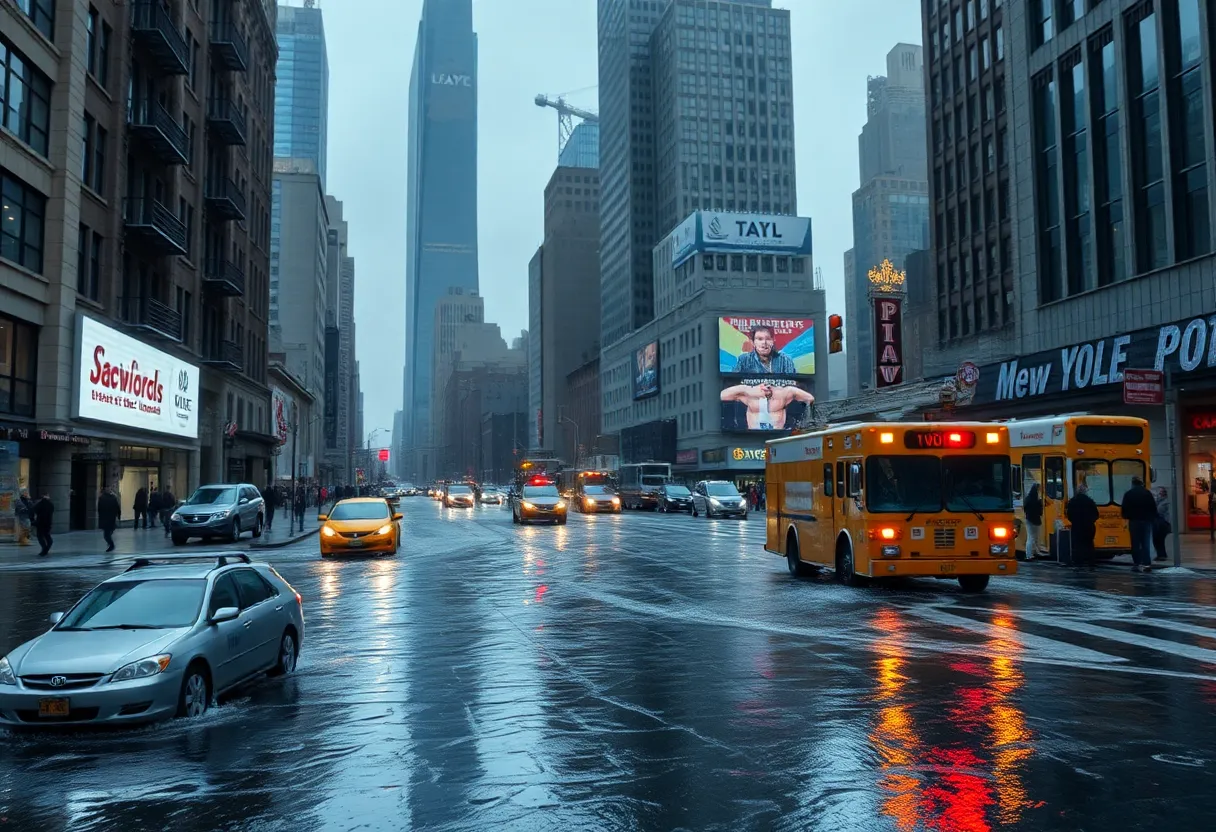News Summary
New York and New Jersey faced devastating flash flooding after torrential rains swept through the region. A state of emergency was declared, rescue operations were initiated, and transit services were disrupted. Governor Murphy emphasized the need for improved infrastructure in the face of extreme weather, as communities begin to assess the damages caused by this weather event.
Torrential Rains Wreak Havoc in New York and New Jersey
As the skies opened up on Monday night, New York and New Jersey faced some serious weather troubles, with **torrential rains** causing **flash flooding** and putting a damper on many people’s plans. Tragically, two individuals lost their lives in Plainfield, New Jersey, after their car was swept away by the raging waters of Cedar Brook. It was a stark reminder of how quickly things can change when nature unleashes its fury.
State of Emergency Declared
In response to the perilous conditions, New Jersey Governor Phil Murphy declared a **state of emergency**. The heavy rains were relentless, dumping over **6 inches of rain** in some areas within a mere five hours. With rainfall reaching more than **2 inches in just one hour at Central Park**, it marked the second-wettest hour ever recorded in New York City. The floodwaters were so intense that major roadways like the Cross Bronx Expressway also fell victim to the deluge, leading to various road closures and stranding numerous vehicles.
Rescue Operations Underway
Emergency services jumped into action, conducting numerous rescue operations in areas heavily impacted by the floods. Places like Scotch Plains, New Jersey, saw significant flood damage along roadways, with responders working to get individuals out of trapped vehicles. Videos circulating online showed dramatic scenes of floodwaters cascading into subway stations, bubbling up through sewer drains, and even trapping passengers inside trains.
Transit Troubles
With flooding impacting transportation, the Metropolitan Transportation Authority (MTA) initially suspended service on several subway lines Monday night. Many commuters faced delays as the water rushed in, creating an uneven start to the week. By Tuesday morning, though, most services resumed, albeit with some residual delays lingering in the air. Amtrak also joined the list of affected transit services, canceling multiple trains on its Northeast Corridor due to flood-related disruptions.
Looking Ahead
While Tuesday brought a welcome sight of **clear skies** in New York City, the flooding wasn’t quite done packing its punch just yet. **Flash flood watches** remained in effect for areas stretching from Washington, D.C., to the Carolinas. The Bronx River was also reported to have risen to a moderate flood stage of about **3.7 feet**, though expectations were that water levels would recede later in the day.
Climate Change on the Mind
As the cleanup began and skies cleared, conversations about climate change began to bubble up. Governor Murphy pointed out that these **extreme weather events** seem to be becoming more common and severe. The city’s aged infrastructure, especially its over **100-year-old sewer system**, struggles to keep up with the stormwater volumes, resulting in the widespread flooding experienced during this rainfall and in earlier events like Hurricane Sandy and the remnants of Hurricane Ida.
A Call for Improvement
The recent deluge served as a wake-up call about the urgent need for improvements to the city’s infrastructure. Proposals for enhanced efforts in **climate resiliency** have surfaced, highlighting a significant funding necessity for the MTA and the City’s Department of Environmental Protection. Those in the know have been working on plans to ensure that when the next storm rolls through, people and transit systems are better prepared.
Final Thoughts
It’s evident that storms are packing a punch, and communities are left grappling with the aftermath. While Tuesday’s sunny disposition brought a moment of relief, the challenges posed by climate change and extreme weather continue to loom large. As the regions begin to assess the damages, it’s clear that better infrastructure and preparations will be crucial for the future. Stay safe out there, everyone!
Deeper Dive: News & Info About This Topic
- The New York Times
- Wikipedia: Flood
- The Guardian
- Google Search: New York floods
- BBC News
- Google Scholar: Climate Change
- NBC News
- Encyclopedia Britannica: Flood
- ABC 7 NYC
- Google News: New Jersey flooding
- AP News
- Google Search: Transit disruptions New York

Author: STAFF HERE PHILADELPHIA WRITER
The PHILADELPHIA STAFF WRITER represents the experienced team at HEREPhiladelphia.com, your go-to source for actionable local news and information in Philadelphia, Philadelphia County, and beyond. Specializing in "news you can use," we cover essential topics like product reviews for personal and business needs, local business directories, politics, real estate trends, neighborhood insights, and state news affecting the area—with deep expertise drawn from years of dedicated reporting and strong community input, including local press releases and business updates. We deliver top reporting on high-value events such as Mummers Parade, Philadelphia Flower Show, and Thanksgiving Day Parade. Our coverage extends to key organizations like the Greater Philadelphia Chamber of Commerce and United Way of Greater Philadelphia, plus leading businesses in telecommunications, food services, and healthcare that power the local economy such as Comcast, Aramark, and Children's Hospital of Philadelphia. As part of the broader HERE network, we provide comprehensive, credible insights into Pennsylvania's dynamic landscape.





